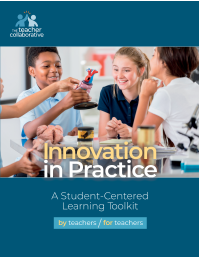Classroom “structure” describes how teachers design tasks, share authority, and evaluate students’ progress. In a student-centered classroom, educators strive to create a pedagogical framework that includes Flexible Structures—championing personalization that supports learning outcomes, advancing metacognitive learning strategies, and creating a positive and powerful classroom climate.
TECHNOLOGY-INFUSED TOOL
“Using a Hyperdoc to Create a Flexible Learning Environment” by Jenn Fredo
An exemplar “hyperdoc” unit and accompanying rubrics, both to demonstrate the successful use of hyperdocs and as a guide for students in practicing and learning about the variety of technologies available to them in a tech-rich classroom.
UNIVERSAL DESIGN TOOL
“How to Set Up an Inclusive Environment in Any Learning Space” by Amy Moylan
Photos of a highly accessible and Universally-Designed classroom paired with charted guidelines to support teachers in considering and applying Universal Design within their own classroom spaces, based on students’ demonstrated needs.
COMPETENCY-BASED PROGRESSION TOOL
“Student-Centered, Mastery-Based and Self-Paced Learning in the English Learner Classroom” by Alicia Serafin
A set of examples from an elementary ESL unit that demonstrate student-centered and Competency-Based Progression approaches, including a mastery check and mastery tracker as well as samples from the teacher’s curriculum. The mastery check is given to individual students when each is ready, and the teacher uses the tracker to indicate how the student is progressing. These artifacts are included comprehensively to illustrate the competency-based progression.




